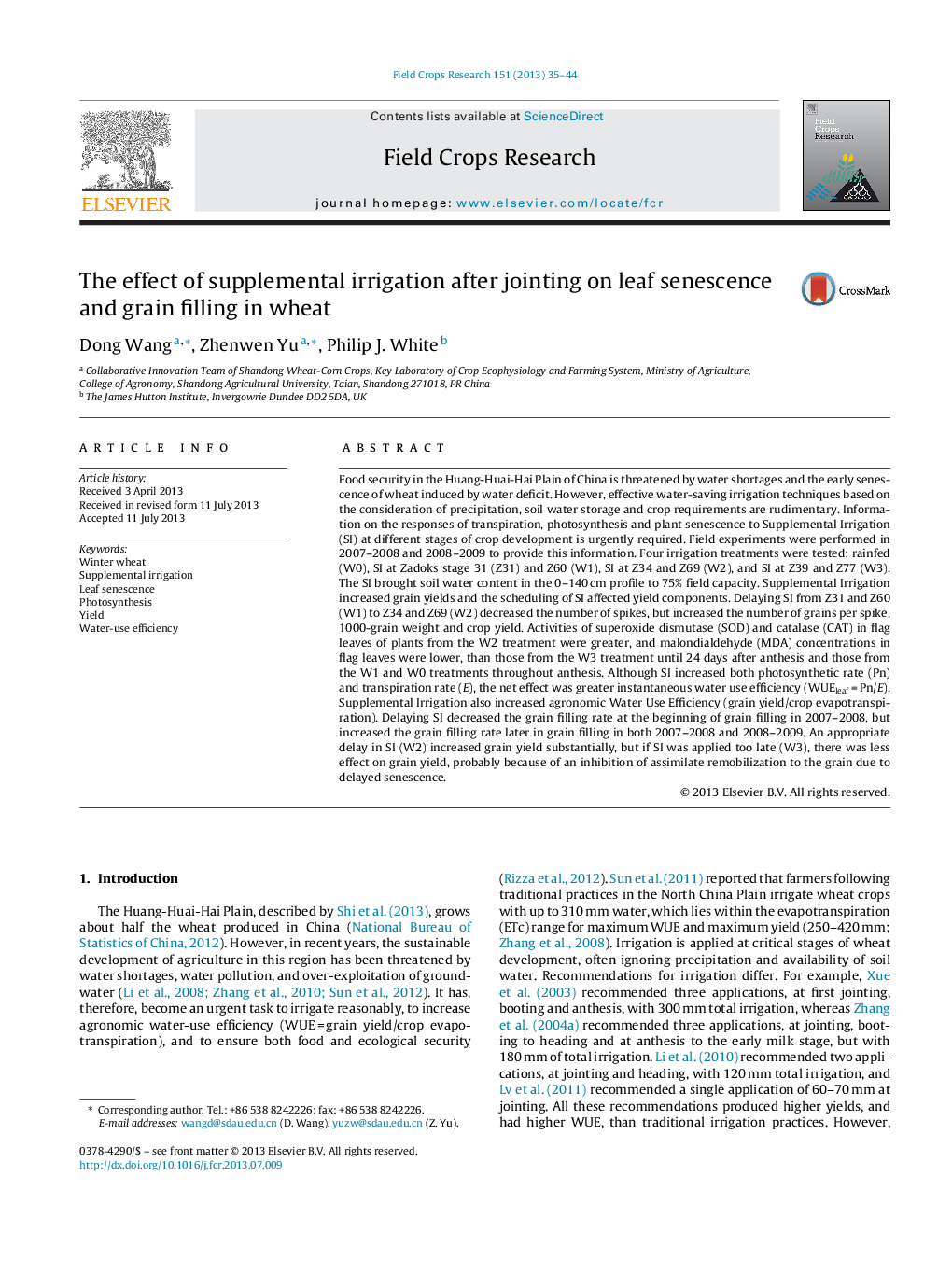| Article ID | Journal | Published Year | Pages | File Type |
|---|---|---|---|---|
| 4510180 | Field Crops Research | 2013 | 10 Pages |
•The scheduling of supplemental irrigation (SI) affected wheat yield components.•Irrigating after anthesis increased photosynthesis without excessive transpiration.•An appropriate delay in SI delayed leaf senescence and increased grain yield.•Excess irrigation or drought during late grain-filling reduced water use efficiency.
Food security in the Huang-Huai-Hai Plain of China is threatened by water shortages and the early senescence of wheat induced by water deficit. However, effective water-saving irrigation techniques based on the consideration of precipitation, soil water storage and crop requirements are rudimentary. Information on the responses of transpiration, photosynthesis and plant senescence to Supplemental Irrigation (SI) at different stages of crop development is urgently required. Field experiments were performed in 2007–2008 and 2008–2009 to provide this information. Four irrigation treatments were tested: rainfed (W0), SI at Zadoks stage 31 (Z31) and Z60 (W1), SI at Z34 and Z69 (W2), and SI at Z39 and Z77 (W3). The SI brought soil water content in the 0–140 cm profile to 75% field capacity. Supplemental Irrigation increased grain yields and the scheduling of SI affected yield components. Delaying SI from Z31 and Z60 (W1) to Z34 and Z69 (W2) decreased the number of spikes, but increased the number of grains per spike, 1000-grain weight and crop yield. Activities of superoxide dismutase (SOD) and catalase (CAT) in flag leaves of plants from the W2 treatment were greater, and malondialdehyde (MDA) concentrations in flag leaves were lower, than those from the W3 treatment until 24 days after anthesis and those from the W1 and W0 treatments throughout anthesis. Although SI increased both photosynthetic rate (Pn) and transpiration rate (E), the net effect was greater instantaneous water use efficiency (WUEleaf = Pn/E). Supplemental Irrigation also increased agronomic Water Use Efficiency (grain yield/crop evapotranspiration). Delaying SI decreased the grain filling rate at the beginning of grain filling in 2007–2008, but increased the grain filling rate later in grain filling in both 2007–2008 and 2008–2009. An appropriate delay in SI (W2) increased grain yield substantially, but if SI was applied too late (W3), there was less effect on grain yield, probably because of an inhibition of assimilate remobilization to the grain due to delayed senescence.
